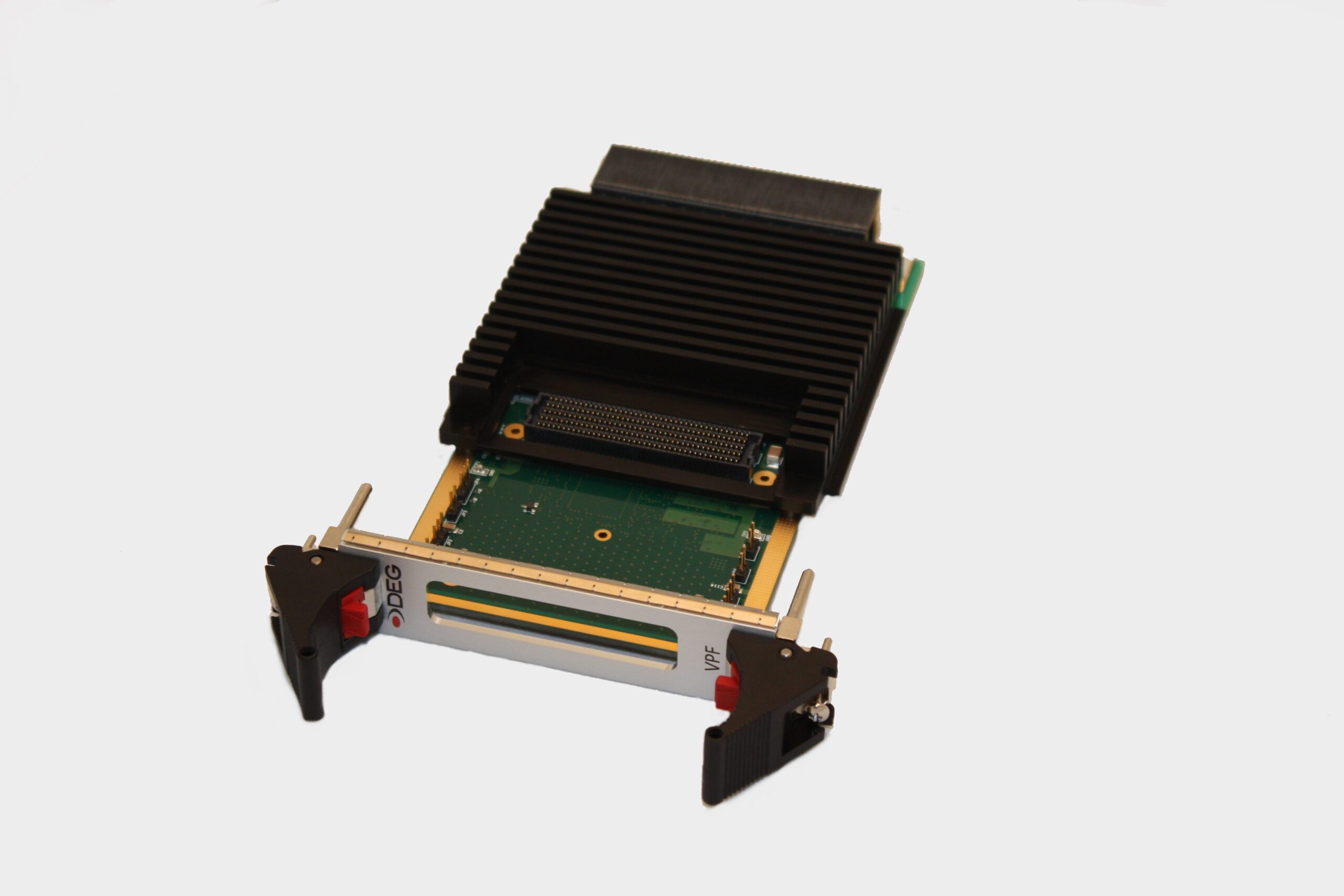VPF: 3U VPX
Carrier - Virtex 7 w/FMC Site

High-Performance 3U VPX Virtex-7 FPGA Digital Receiver
- Supports One HPC FMC Site
- Virtex-7 VX330T or VX690T FPGAs
- Air and Conduction Cooled
- PCI-Express Gen3 Interface
- FPGA Design Kit
- 256 MBit QSPI Flash
- Two Banks of 2GB DDR3 (at 667 MHz DDR)
- 8 Lanes GTH between FMC and FPGA
Download Datasheet
Maximum Application Configurability & Performance
Maximum Application Configurability & Performance
The VPF is a VPX form factor (VITA 46), FPGA processor board designed to meet the needs of challenging, embedded high‐performance digital signal processing applications at a competitive price point. AMD Virtex 7: VX330 and VX690 population options are available. The Virtex 7 FPGA provides impressive processing capabilities and supports operations such as: FFTs, FIR filters, fixed‐point and repetitive processing tasks. The VPF FPGA node processes input from the FMC HPC (Vita 57.1) site, allowing for maximum application configurability and performance when coupled with DEG’s market leading ADC and DAC FMC modules (250MSPS to 4.0GSPS). The VPF is fully compliant with the OpenVPX standard and accommodates the PCIExpress Gen 3.0 communication protocol. Delphi also offers a VPF FPGA Design kit which allows customers to leverage and modify DEG source code, develop within an open architecture, and rapidly integrate FPGA HDL. The DEG FPGA Design kit includes: Source code, simulation test bench and utilities to support custom algorithm development. Embedded Linux, VX Works and Windows software drivers are available. HPC FMC Site, Fully Compatible with all Delphi ADC and DAC FMC Modules.
DEG also offers a VPF FPGA Design kit which allows customers to leverage and modify DEG source code, develop within an open architecture, and rapidly integrate FPGA HDL with DEG’s DSP functions and resources. The DEG FPGA Design kit includes VPF: Source code, simulation test bench and utilities to support custom algorithm development. Embedded Linux software drivers are available.
